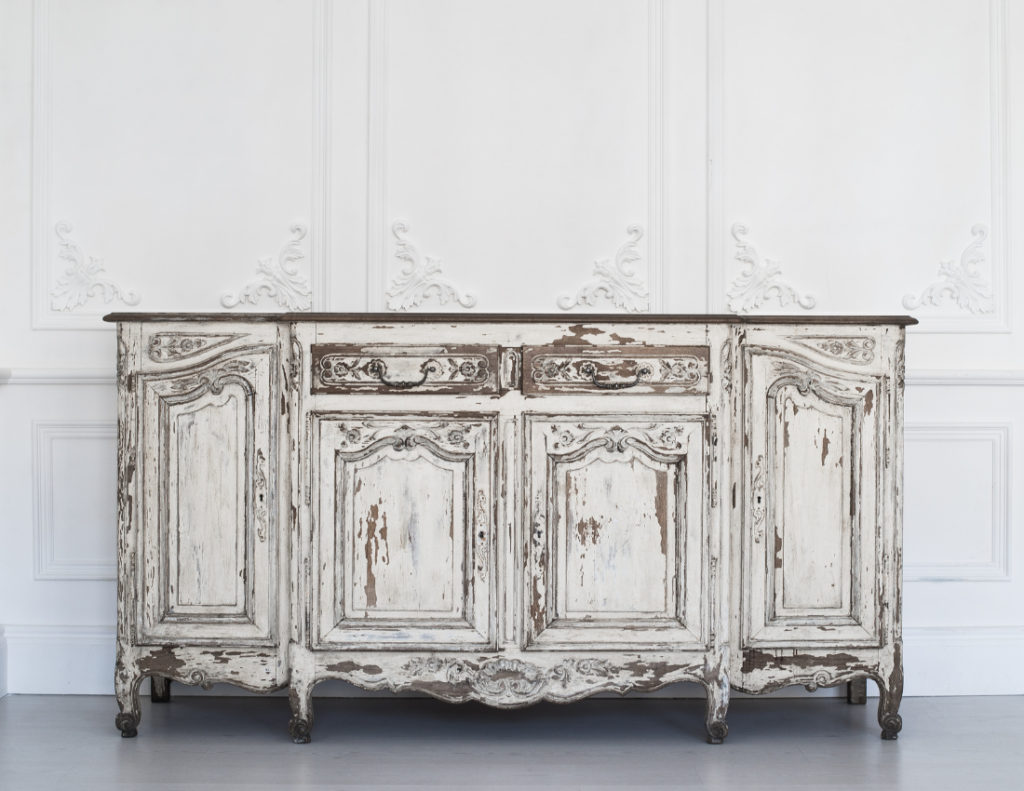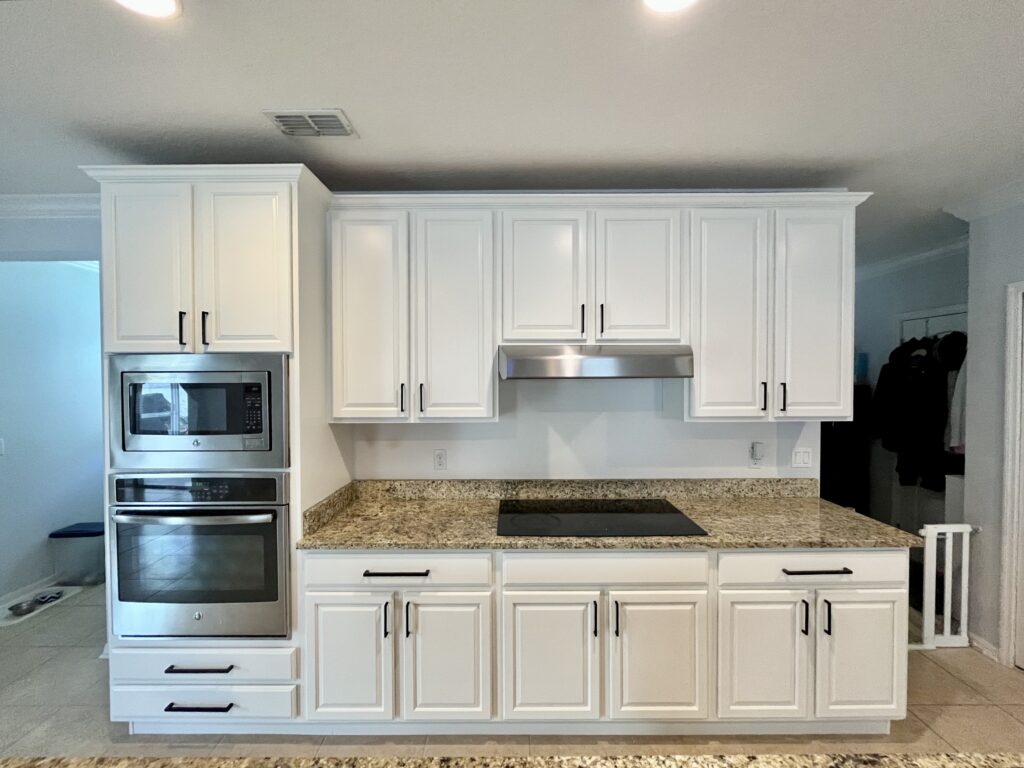You finally got your kitchen cabinets painted, expecting a smooth, fresh finish. But now, the paint is peeling, and you’re left wondering—why is fresh paint peeling off cabinets?
It’s frustrating, but it’s also common, especially in homes around Avalon Park, FL where humidity, grease, and daily wear take a toll on painted surfaces.
The good news? There’s a reason it’s happening—and a fix. Whether it’s a problem with prep work, primer, paint type, or drying time, we’ll break down what went wrong and how to stop it from happening again.
Key Takeaways:
- Prep work matters because skipping cleaning, sanding, or primer prevents the paint from sticking properly.
- Not all paint works for cabinets because regular wall paint is not designed to handle daily wear and tear. Acrylic paint, oil paint, or cabinet-grade enamel last longer.
- Humidity and heat affect painted cabinets because high moisture levels can weaken paint adhesion, especially in kitchens and bathrooms.
- Drying time is important because rushing coats or using cabinets too soon can cause peeling. Paint needs time to fully cure before regular use.
- Professional painters make a difference because cabinet painters in Avalon Park FL use the right prep, paint, and techniques to prevent peeling and create a lasting finish.

Why is Fresh Paint Peeling Off Cabinets?
Freshly painted cabinets should last years, but when the paint starts peeling, it’s a sign something went wrong in the process. Paint doesn’t just lift for no reason—it usually happens because the surface wasn’t prepped properly, the wrong paint or primer was used, or environmental factors like heat, moisture, or grease interfered.
Unlike walls or furniture, cabinets face constant use. Think about it—drawers and doors are opened and closed all day, oils from hands transfer to surfaces, and cooking steam, humidity, and cleaning products add extra wear. If the paint wasn’t applied correctly, it won’t hold up.
Now, let’s break down the most common causes of fresh paint peeling off cabinets and how to avoid them.
Common Causes of Fresh Paint Peeling Off Cabinets
If you’re asking, why is fresh paint peeling off cabinets, the answer usually comes down to poor prep, the wrong materials, or environmental factors. Cabinets go through more wear and tear than other painted surfaces, so skipping steps or using the wrong paint can lead to peeling.
Here’s what might be causing the issue and how to prevent it.
1. Poor Surface Preparation
One of the biggest mistakes in cabinet painting is skipping proper prep work. If cabinets aren’t cleaned and sanded, paint adhesion suffers.
- Grease, dirt, and dust: Kitchen cabinets collect grease, dust, and cooking residue. Even in a bathroom, moisture and mildew can create a barrier that prevents paint from sticking.
- Skipping sanding: Without using sandpaper, the surface may be too smooth for paint to grip properly. Lightly sanding with 220-grit sandpaper before painting improves adhesion.
- Not removing old finish properly: If cabinets have a glossy wood stain, oil-based paint, or lacquer finish, the new coat won’t bond well unless properly scuffed or stripped.
2. Skipping Primer or Using the Wrong One
Primer is a must when painting cabinetry. It helps paint stick to surfaces like wood, laminate, or masonry and prevents stains from bleeding through.
- Using the wrong primer: Not all primers work for cabinets. Latex primers don’t adhere well to glossy surfaces, while oil-based primers work better for cabinets that endure daily wear and tear.
- Skipping primer entirely: Some homeowners go straight to Behr or another acrylic paint without a primer. This often leads to peeling, especially in high-humidity areas like bathrooms and kitchens.
3. Choosing the Wrong Paint Type
Not all paint is built for kitchen cabinets. Using the wrong one can mean trouble.
- Flat or matte paint: These don’t hold up to repeated wiping and cleaning. A paint sheen like satin, semi-gloss, or gloss is better.
- Wall paint vs. cabinet paint: Regular wall paint won’t hold up to cabinet use. Instead, go for acrylic paint, oil paint, or specialized cabinet enamel for longevity.
4. Humidity, Heat, and Environmental Factors
Living in Avalon Park, FL, you know how humidity can wreak havoc on home projects. Cabinets exposed to high moisture, heat, or temperature changes are more likely to peel.
- Too much humidity: If the air is too damp, especially in a bathroom or kitchen, it can keep paint from drying properly. Running a dehumidifier while painting helps.
- Heat from cooking: If cabinets near the stove or oven weren’t prepped well, heat can cause the paint to crack and peel.
- Water damage: If cabinets under the sink or near the dishwasher have water exposure, paint may start bubbling or lifting.
5. Rushing the Painting Process
Good cabinet painting takes time. Skipping steps or applying coats too quickly can lead to peeling paint.
- Applying thick coats too fast: If one coat isn’t dry before the next is applied, the top layer may dry before the bottom, causing peeling.
- Not letting paint cure: Paint may feel dry to the touch, but full curing can take up to 30 days. Using cabinets too soon can lead to scratches and peeling.
How to Prevent Paint from Peeling Off Cabinets
If you want your kitchen cabinets to last, these steps can make all the difference.
1. Prep Your Cabinets Properly
- Clean with a degreaser to remove grease, dirt, and dust.
- Sand with sandpaper (220-grit works best) for better adhesion.
- Wipe away any dust with a damp towel before painting.
2. Always Use a Quality Primer
- Use a primer that works for your cabinetry type (wood, laminate, or masonry).
- For high humidity areas, choose a stain-blocking oil-based or shellac primer.
3. Pick the Right Paint
- Use a durable acrylic paint, oil paint, or enamel for kitchen cabinets.
- Choose a paint sheen like satin, semi-gloss, or gloss for durability.
4. Control the Environment While Painting
- Avoid painting on humid days—use a dehumidifier if needed.
- Keep moisture away from freshly painted cabinets.
5. Be Patient with Drying and Curing
- Allow enough time between coats (at least 6-8 hours).
- Let cabinets cure for at least 2-4 weeks before heavy use.
How We Can Help with Cabinet Painting in Avalon Park, FL

If you’re tired of fresh paint peeling off cabinets, let the experts handle it. Our cabinet painters in Avalon Park FL know how to prep, prime, and paint cabinets for a smooth, lasting finish. We serve Mount Dora, Sanford, FL, and the surrounding areas.
Here’s our process:
✔ Surface Prep: We clean, sand, and prime properly.
✔ Premium Paints: We use durable acrylic paint, oil paint, and cabinet-grade enamel.
✔ Precision Application: Our team ensures smooth, even coats.
✔ Proper Curing Time: We let paint fully dry to prevent future peeling.
Don’t let peeling paint ruin your kitchen cabinets. Contact 407-917-9535 today for a FREE estimate.
